
- Folk Art Carved
- Culture
- African (23)
- American (18)
- American South (4)
- Americana (3)
- Appalachian (3)
- Balinese (20)
- Folk Art (17)
- Guatemalan (5)
- Haitian (3)
- Indonesian (15)
- Inuit (3)
- Mexican (265)
- Native American: Us (6)
- Navajo (3)
- Pennsylvania Dutch (29)
- Peruvian (3)
- Puerto Rican (4)
- Punu (2)
- Unknown (10)
- Western (5)
- Other (2985)
- Listed By
- Material
- Acrylic, Wood (3)
- Bone (3)
- Brass, Wood (3)
- Burlwood, Wood (5)
- Carved Wood (4)
- Coconut (5)
- Driftwood (7)
- Driftwood, Wood (3)
- Metal (6)
- Metal, Wood (3)
- Pine (4)
- Resin (8)
- Solid Wood (5)
- Stone (11)
- Wood (2003)
- Wood / Woodenware (5)
- Wood Metal (3)
- Wood, Glass (4)
- Wood, Metal (4)
- Wood, Paint (2)
- Other (1335)
- Signed
- Style
- 1970s (10)
- American (38)
- Americana (157)
- Antique (14)
- Asian (11)
- Black Folk Art (33)
- Black Forest (23)
- Cane (21)
- Country (24)
- Folk Art (885)
- Naive, Primitive (86)
- Primitive (13)
- Rustic (11)
- Rustic / Primitive (26)
- Traditional (10)
- Tramp (14)
- Tramp Art (22)
- Victorian (10)
- Vintage (22)
- Walking Stick (31)
- Other (1965)
- Unit Of Sale
Vintage Don Quixote Spanish Folk Art Carved Wood Silhouette Wall Plaque 23
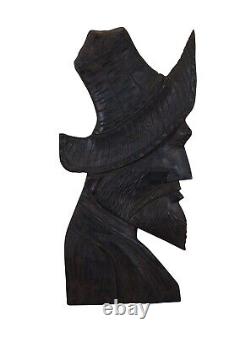
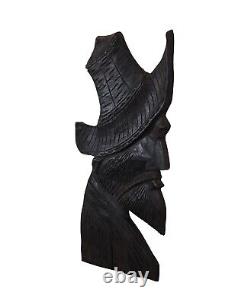
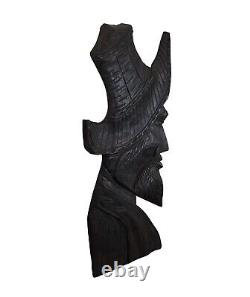
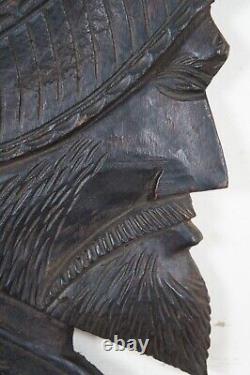
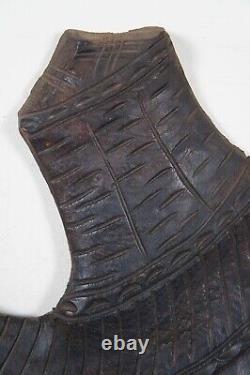
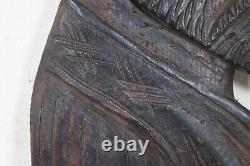
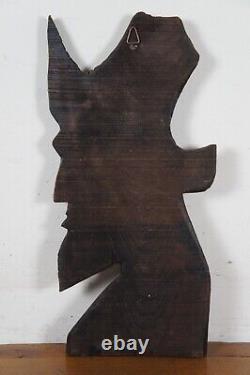




Vintage darkly stained hand carved folk art style wall plaque / wall hanging, showing a bearded Don Quixote silhouette wearing a country / farmer's hat. Don Quixote[a][b] is a Spanish epic novel by Miguel de Cervantes. Originally published in two parts, in 1605 and 1615, its full title is The Ingenious Gentleman Don Quixote of La Mancha or, in Spanish, El ingenioso hidalgo don Quixote[b] de la Mancha (changing in Part 2 to El ingenioso caballero don Quixote[b] de la Mancha). [c] A founding work of Western literature, it is often labelled as the first modern novel[2][3] and one of the greatest works ever written. The plot revolves around the adventures of a member of the lowest nobility, an hidalgo from La Mancha named Alonso Quijano, who reads so many chivalric romances that he either loses or pretends to have lost his mind in order to become a knight-errant (caballero andante) to revive chivalry and serve his nation, under the name Don Quixote de la Mancha. [b] He recruits a simple farmer, Sancho Panza, as his squire, who often employs a unique, earthy wit in dealing with Don Quixote's lofty rhetoric. In the first part of the book, Don Quixote does not see the world for what it is and prefers to imagine that he is living out a knightly story meant for the annals of all time. The book had a major influence on the literary community, as evidenced by direct references in Alexandre Dumas' The Three Musketeers (1844), Mark Twain's Adventures of Huckleberry Finn (1884), and Edmond Rostand's Cyrano de Bergerac (1897), [citation needed] as well as the word quixotic. When first published, Don Quixote was usually interpreted as a comic novel. After the French Revolution, it was better known for its presumed central ethic that in some ways individuals can be intelligent while their society is quite fanciful and was seen as a fascinating, enchanting or disenchanting book in this dynamic and a didactic matter. In the 19th century, it was seen as social commentary, but no one could easily tell whose side Cervantes was on.
Many critics came to view the work as a tragedy in which Don Quixote's idealism and nobility are viewed by the post-chivalric world as not enough and are defeated and rendered useless by a common reality devoid of his true romantic inclinations designed for the taste of royalty; by the 20th century, the novel had come to occupy a canonical space as one of the foundations of letters in literature. Good Overall - Gentle wear. 11" x 1" x 22.75 (Width x Depth x Height).
The sooner you pay, the sooner you get your item. Please let us know if you have any additional questions.
We are sorry for the inconvenience. We do are very best to package and secure all our items so they make safe trips to their new homes. We strive to get your items delivered in the most safe and cost effective manner. Add a map to your own listings.
